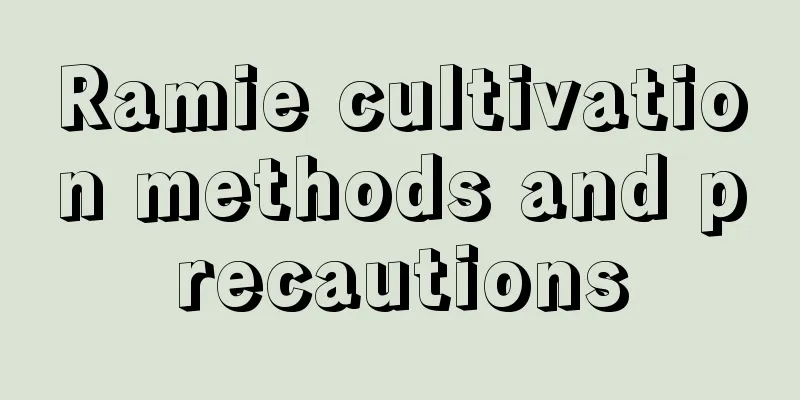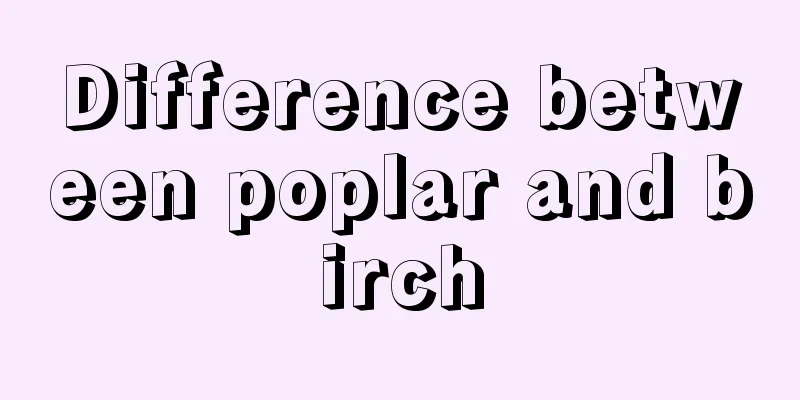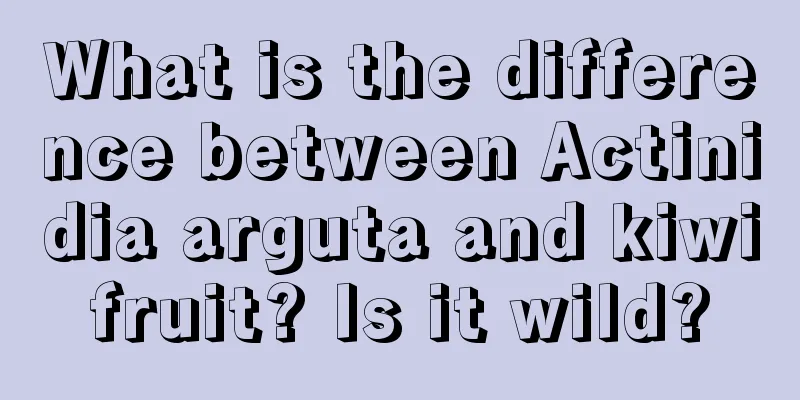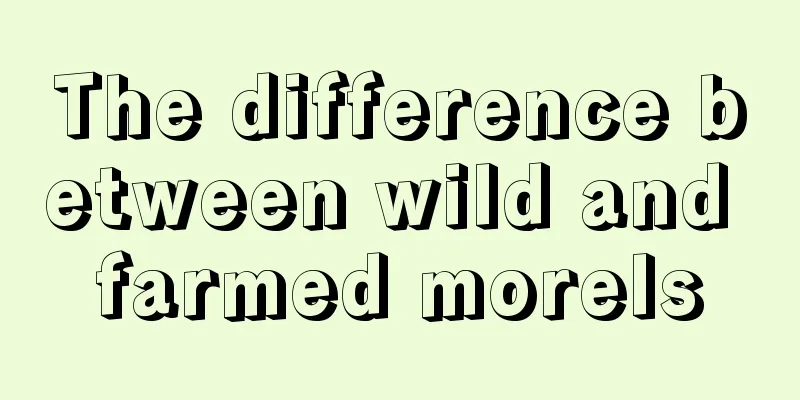Ramie cultivation methods and precautions

1. Maintenance methods1. Substrate selection: Ramie has low requirements for soil and can basically grow in any soil. But yields will be higher in deep, well-drained, fertile, neutral soils. When preparing the soil, you need to add more. You can mix bean dregs, leaf mold, garden soil, and an appropriate amount of small stones. This will increase the soil's air permeability while ensuring the basic nutrients it needs for growth. 2. Temperature management: The optimal temperature for ramie growth is between 16℃ and 30℃. Winter temperatures below 7°C will cause the roots to freeze, and they need to be covered with soil or straw to overwinter. High temperatures in summer will affect their flowering. 3. Water management: Ramie requires a lot of water to grow and is suitable for growing in soil with a moisture content of 21% to 25%. The maximum soil moisture content cannot exceed 84%, otherwise it will affect the root respiration of ramie. 4. Nutrient management: More nutrients are needed during the growth period. 24 kg of nitrogen fertilizer, 12 kg of phosphorus pentoxide, and 16 kg of oxygen can be combined and applied per mu. Before wintering, you can mix human and animal feces with leaf mold and other organic fertilizers and bury them deep around the ramie. 2. Breeding techniques1. Cutting: Summer is suitable for cutting. Before cutting, the soil needs to be disinfected with potassium permanganate liquid. Pick the cuttings you need before the sun rises fully, and cut off the large leaves after collecting the cuttings. After placing it in a cool and ventilated place for about four hours, plant the cuttings in soil about 3 cm deep. 2. Wintering: The temperature in winter needs to be kept at around 10℃. You can use the soil covering method to keep warm, covering the soil about 8 cm deep to prevent frost damage. 3. Problem diagnosis and treatment1. Root rot: Excessive watering or excessive water accumulation in the garden will cause the soil to become less breathable, which will inhibit the respiration of the roots and lead to root rot. It can be treated with Bordeaux mixture. 2. Longicorn beetles: When the number is small, you can adopt the method of manual killing. The adult beetles can be killed after being shaken off the branches, and the larvae can be killed with a sharp weapon or collected and burned. When the amount is large, you can use chemical treatment, mix DDT with water and spray it evenly on the plant surface, and increase the number of spraying appropriately. IV. Other issues1. Can it be hydroponically grown: It cannot be hydroponically grown. Ramie has very high requirements for soil permeability. Generally speaking, excessive watering or water accumulation in the field will cause the roots of ramie to rot. If it is grown hydroponically, the respiration of the ramie roots will be completely inhibited, and in severe cases, the plant will die. 2. Can it be planted in the ground: Yes. Ramie is suitable for growing in deep and fertile soil. The amount of potted soil is small and the fertility is unstable, so it is suitable to be planted in the ground. |
<<: Cultivation methods and precautions of bamboo begonia
>>: Cultivation methods and precautions of purple-backed vegetable
Recommend
What fertilizer should be used to make bougainvillea bloom? When should bougainvillea be fertilized?
1. What fertilizer to use If you want to make Bou...
Grow these 6 kinds of flowers in the summer, and they will climb up the wall in one month, and you don’t even need to put up curtains!
Moneywort As the name suggests, the money vine lo...
The difference between Little Red Dress and Little Blue Dress
1. Form Little Red Dress: The arrangement of its ...
How to care for cactus
Four seasons maintenance spring: If the outside t...
What fruit trees are best to plant in the yard (what fruit trees are good for Feng Shui in the family yard)
Trees are usually planted outside the house. If t...
How to remedy wilting ivy leaves
1. Lower the temperature 1. Cause: If this proble...
When is the best time to transplant peony flowers? How to transplant with high survival rate?
The peony is elegant and has always been loved by...
What kind of trees are suitable for planting in the yard?
The yard at home is suitable for planting trees w...
Can Clivia be watered with white wine? Is it true that it can be watered with white wine?
1. Can I pour white wine? Regarding the nutrients...
Rice direct seeding planting technology and management
Direct seeding of rice is an efficient planting m...
How to Grow Polygonatum
1. Soil When breeding, you need to use soil with ...
What kind of fertilizer is good for Chlorophytum comosum base fertilizer (base fertilizer application method)
Chlorophytum base fertilizer selection Generally ...
Do hydrangeas like the sun?
Hydrangea likes the sun Hydrangea loves the sun v...
The growing environment and local conditions of the peach tree
Growth environment and conditions of small peach ...
How to grow colorful peppers in pots (tips on how to grow colorful peppers indoors)
1) How to sow colorful peppers Under greenhouse c...









